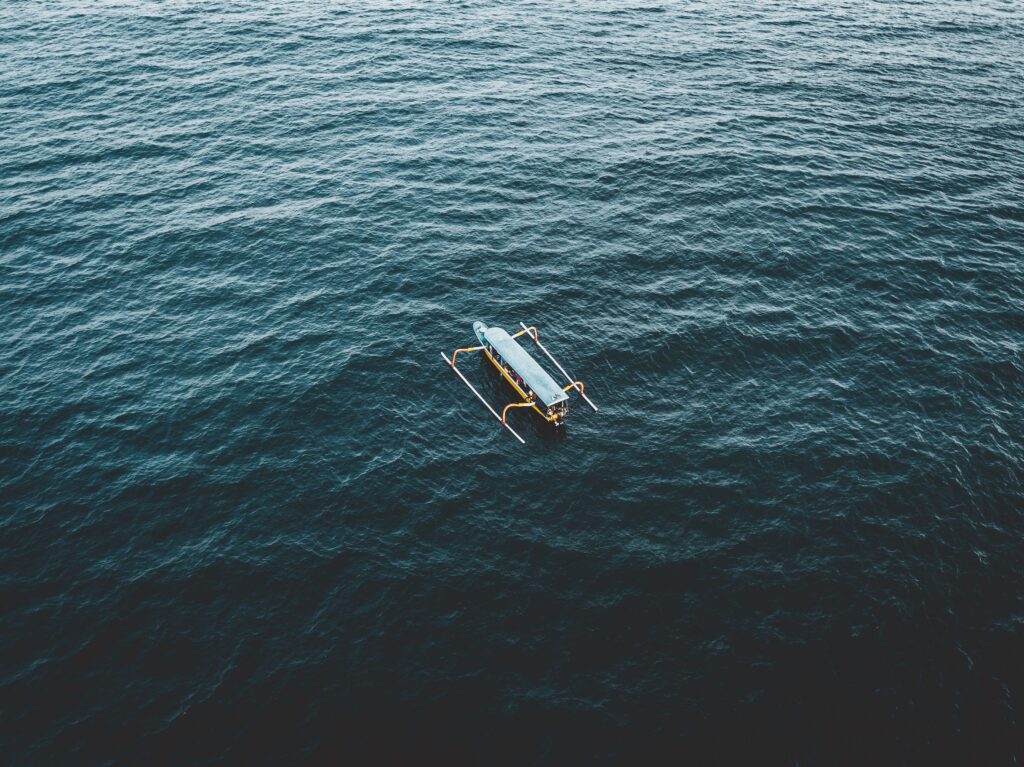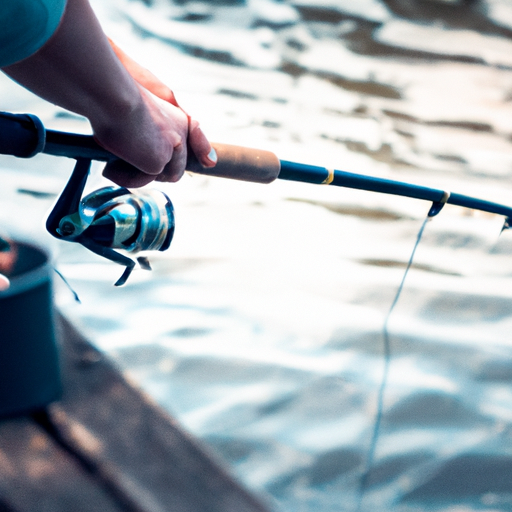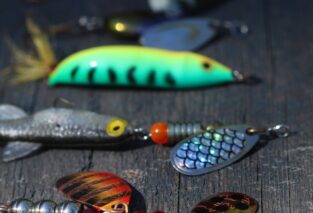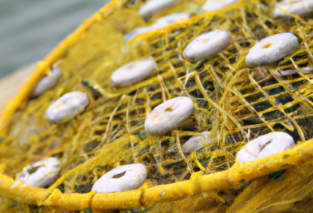Are you a fishing enthusiast who is new to the sport? If so, you might be wondering about the differences between fishing in rivers and fishing in lakes. Well, look no further because this article is here to shed some light on the topic. Whether you prefer the tranquility of a calm lake or the faster pace of a flowing river, understanding the various factors that come into play in each environment will help you make the most out of your fishing adventures. So, grab your fishing gear and let’s dive into the world of fishing in rivers vs. lakes!

Equipment
Rods and Reels
When it comes to fishing in rivers and lakes, having the right equipment is crucial. For rods and reels, it is recommended to use medium to heavy-action rods that are around 6 to 7 feet long. This length provides a good balance between casting distance and control. Additionally, a spinning reel is often preferred for its versatility and ease of use for beginners.
Lines and Hooks
Choosing the right line and hook is equally important. For river fishing, a strong and durable monofilament or braided line is commonly used, as the currents can be strong and abrasive. In lakes, a monofilament or fluorocarbon line works well. For hooks, sizes can vary depending on the targeted fish species, but it is advisable to have a variety of sizes to accommodate different bait and fish sizes.
Baits and Lures
Both rivers and lakes offer various opportunities for bait and lure fishing. In rivers, natural baits such as worms, minnows, and crayfish are popular choices. Additionally, artificial lures like spoons, spinners, and crankbaits can be effective in rivers. In lakes, popular baits include live bait such as worms and minnows, as well as artificial lures like soft plastics, jigs, and topwater baits. Experimenting with different baits and lures will help you find what works best in each environment.
Accessibility
Location
When planning a fishing trip, considering the location is essential. Rivers and lakes can be found in various areas, but the accessibility may differ. Lakes can often be found in more recreational areas, with amenities such as parking, picnic areas, and boat ramps readily available. Rivers, on the other hand, may require a bit more effort to reach, as they can be located in more remote and rugged terrain. Researching the accessibility of your desired fishing spots beforehand can help ensure a more enjoyable experience.
Transportation
Transportation is another factor to consider when choosing between fishing in rivers or lakes. Lakes often have convenient access points for vehicles and boats, making it easier to transport your fishing gear. In contrast, rivers may require additional modes of transportation, such as hiking to remote locations or using kayaks or canoes to access different stretches of the river. Proper planning and preparation for transportation can make a significant difference in your fishing experience.

Water Characteristics
Flow and Currents
One of the main differences between fishing in rivers and lakes is the flow of water. Rivers typically have a constant flow, generating currents that can impact your fishing technique. It is crucial to understand the direction and strength of the currents to position yourself properly and present your bait or lure effectively. In lakes, there are usually no significant currents, allowing for a more relaxed fishing experience.
Depth and Visibility
Another difference in water characteristics is the depth and visibility. Rivers can vary in depth, ranging from shallow rocky areas to deeper pools. Understanding the depth of the water you are fishing in can help you select the appropriate fishing techniques and bait. Additionally, rivers can have varying visibility due to factors such as rainfall or sedimentation. In lakes, visibility may be clearer, allowing for better visibility of fish and underwater structures.
Fish Species
Variety
Both rivers and lakes offer a diverse range of fish species. Rivers are often home to freshwater species such as trout, bass, catfish, and pike. The specific species can vary depending on the region and the type of river. Lakes, on the other hand, can support a wider variety of fish species due to their larger size and more stable ecosystems. Common fish found in lakes include bass, walleye, pike, crappie, and perch. Researching the fish species in your preferred fishing location can help you target your efforts more effectively.
Size and Behavior
The size and behavior of fish can also differ between rivers and lakes. In rivers, fish tend to be more agile due to the currents, and catching larger fish can be a thrilling challenge. Lake fish, on the other hand, often have more room to grow and can reach larger sizes. Understanding the behavior of the fish species you are targeting is important in selecting the right fishing techniques and adjusting your expectations accordingly.

Fishing Techniques
Casting
Casting is a fundamental technique used in both river and lake fishing. Casting involves launching the bait or lure into the water to attract fish. In rivers, casting upstream and allowing the current to carry the bait downstream can be effective as it mimics natural food movement. In lakes, casting toward underwater structures or areas with fish activity, such as drop-offs or weed beds, can increase your chances of a successful catch.
Trolling
Trolling is a popular technique used mainly in lakes, although it can also be employed in larger rivers. It involves dragging lures or bait behind a moving boat to attract fish. Trolling can cover a large area and is useful for targeting open-water fish species like trout, salmon, and walleye. Adjusting your trolling speed and using depth control tools like downriggers or diving planers can help you reach fish at different depths.
Still Fishing
Still fishing, also known as bottom fishing, is a technique commonly used in both rivers and lakes. It involves casting or dropping baited hooks to the bottom and waiting for fish to bite. This technique can be effective in rivers where fish are concentrated in specific areas such as pools or eddies. In lakes, still fishing can be productive near structures like submerged logs, weed lines, or drop-offs, where fish often gather.
Fly Fishing
Fly fishing is a specialized technique that requires specific equipment and skills. It is commonly associated with river fishing, as the flowing water allows for precise presentations of lightweight flies. Fly fishing in rivers requires casting the fly upstream and allowing it to drift naturally in the current. However, fly fishing can also be practiced in lakes, targeting fish species such as trout or bass near the water’s surface. The art of fly fishing can be challenging but highly rewarding for those willing to invest the time to master it.
Catch Rates
Factors Affecting Catch Rates
Several factors can affect catch rates in both rivers and lakes. The time of day, weather conditions, water temperature, and the presence of natural food sources can all influence fish activity and feeding behavior. Additionally, understanding the specific habitat preferences of the fish species you are targeting can help you locate areas with higher catch rates. Taking into account these factors and adjusting your fishing approach accordingly can significantly improve your chances of success.
Expected Catch Rates
It is important to set realistic expectations for catch rates when fishing in rivers or lakes. Catch rates can vary depending on the fishing location, time of year, and the specific fish species targeted. In some instances, rivers may offer higher catch rates due to the concentration of fish in certain areas and the natural flow of food sources. However, lakes can provide opportunities for larger catches and a wider variety of fish species. Researching catch rates specific to your desired fishing location can give you a better idea of what to expect.

Experience Level
Beginner-Friendly
Both river and lake fishing can be enjoyed by beginners, but each offers its own advantages. Rivers can be an excellent starting point for beginners, as they provide more defined fishing areas and predictable fish behavior in certain spots. Rivers also offer the opportunity to learn and practice various fishing techniques in a more controlled environment. Lakes, on the other hand, may present a steeper learning curve due to their larger size and potentially more challenging fish behavior. However, with proper guidance and practice, beginners can quickly adapt and enjoy fishing in lakes as well.
Experience Required
For more experienced anglers, both river and lake fishing can offer exciting challenges. Rivers require a greater understanding of fish behavior, currents, and the ability to read the water. The constantly changing conditions of rivers demand adaptability and quick decision-making. Lake fishing, particularly in large and complex lakes, may require more knowledge of fish movements, locating underwater structures, and the use of advanced fishing techniques. With the right expertise and experience, both river and lake fishing can provide rewarding and memorable fishing adventures.
Hazards
River Hazards
Fishing in rivers comes with its own set of hazards that anglers need to be aware of. Fast-moving currents can be dangerous, especially in deeper areas or near sudden drop-offs. Slippery rocks and uneven riverbeds can lead to falls and injuries. It is crucial to always wear appropriate footwear with good traction and take cautious steps when navigating riverside areas. Additionally, sudden weather changes and flash floods can occur, so it is important to monitor weather conditions and have a plan for seeking safety if needed.
Lake Hazards
While lakes generally pose fewer immediate hazards compared to rivers, there are still some risks to consider. Boating or fishing from a boat can be hazardous if proper safety measures are not taken. It is essential to wear personal flotation devices (PFDs) and follow boating regulations. Lakes can also experience sudden weather changes, including strong winds and storms, so paying attention to the forecast and having a plan to seek shelter is crucial. Additionally, underwater hazards such as submerged logs or rocks can pose a risk to boats and anglers, so maintaining situational awareness is important.

Regulations
Fishing Licenses
Before you embark on your fishing adventure, it is essential to check the regulations regarding fishing licenses. Fishing in rivers and lakes often requires a valid fishing license, which can be obtained from local government agencies or authorized vendors. These licenses help ensure the sustainable management of fish populations and contribute to conservation efforts. Regulations may vary depending on the location, fish species, and the type of fishing (recreational, commercial, or catch-and-release). Familiarize yourself with the specific regulations for your desired fishing destination to avoid any legal complications.
Restrictions and Limits
In addition to fishing licenses, there may be additional restrictions and limits imposed on fishing in rivers and lakes. These restrictions can include size limits for certain fish species, bag limits (the maximum number of fish that can be kept), and specific fishing seasons. It is essential to thoroughly understand and adhere to these restrictions to promote responsible fishing practices and protect the fish populations. Ignorance of the regulations does not exempt anglers from penalties, so always research and comply with the rules of the fishing area you plan to visit.
Seasonality
Seasonal Fishing Opportunities
Both rivers and lakes offer different fishing opportunities throughout the year due to seasonal variations. In rivers, certain fish species may have specific spawning seasons or migrate to different areas at different times of the year. Targeting these seasonal movements can lead to increased chances of successful fishing. In lakes, seasonal variations can also influence fish behavior and feeding patterns. Understanding the changes in water temperature, vegetation growth, and the movement of baitfish can assist in identifying optimal fishing opportunities throughout the year.
Fish Migration
For anglers, fish migration can present exciting opportunities in both rivers and lakes. Many fish species undertake migratory movements to spawn or seek food sources. In rivers, migratory fish such as salmon or steelhead attract avid anglers during specific periods when they return to their natal streams. The chance to catch these prized fish during their migration can be a thrilling experience. In lakes, certain fish species may migrate to shallower or deeper waters depending on the season, presenting unique fishing opportunities. Researching the migration patterns of your target fish species can help you plan your fishing trips accordingly.
Whether you choose to fish in rivers or lakes, both environments provide their own unique experiences and challenges. With the right equipment, knowledge, and a touch of patience, you can embark on an enjoyable fishing journey. Remember to always respect the natural environment, practice responsible fishing, and be open to learning from each fishing experience. Happy angling!





